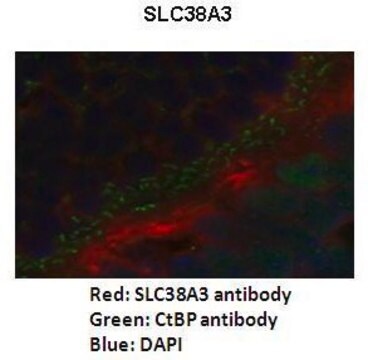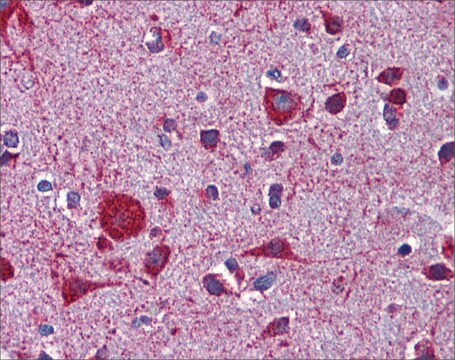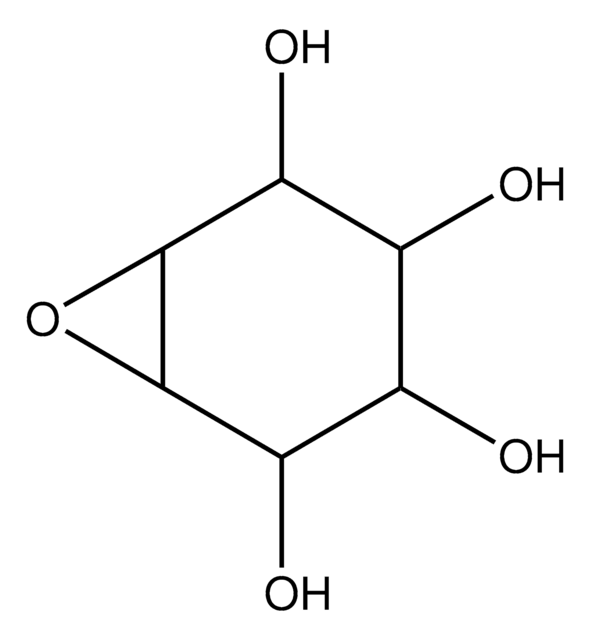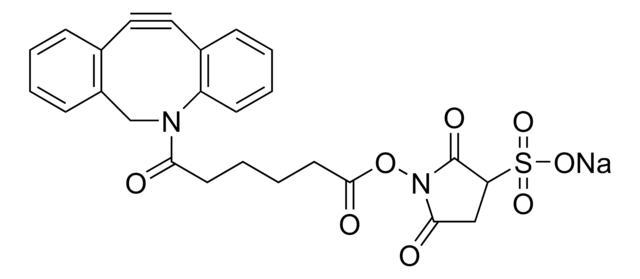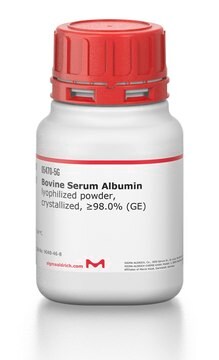MABN1872
Anti-ApoER2 Antibody, clone 4H3E6
clone 4H3E6, from rat
Sinónimos:
Low-density lipoprotein receptor-related protein 8, ApoER2, Apolipoprotein E receptor 2, LRP-8
About This Item
Productos recomendados
origen biológico
rat
Nivel de calidad
forma del anticuerpo
purified immunoglobulin
tipo de anticuerpo
primary antibodies
clon
4H3E6, monoclonal
reactividad de especies
mouse
técnicas
immunofluorescence: suitable
western blot: suitable
isotipo
IgG2aκ
Nº de acceso UniProt
Condiciones de envío
ambient
modificación del objetivo postraduccional
unmodified
Información sobre el gen
mouse ... Lrp8(16975)
Descripción general
Especificidad
Inmunógeno
Aplicación
Immunofluorescence Analysis: A representative lot detected developmental stage-dependent ApoER2 expression patterns among 4% paraformaldehyde-fixed, OCT-embedded frozen embryonic (E13.0 to E18.5) and neonatal (P0) brain tissues from wild-type, but not Apoer2-knockout mice (Hirota, Y., et al. (2015). J. Comp. Neurol. 523(3):463-478).
Western Blotting Analysis: A representative lot detected HA-tagged full-length mouse ApoER2 exogenously expressed in HEK293T cells (Hirota, Y., et al. (2015). J. Comp. Neurol. 523(3):463-478).
Neuroscience
Calidad
Western Blotting Analysis: 0.5 µg/mL of this antibody detected ApoER2 in 10 µg of embryonic E16 mouse brain tissue lysate.
Descripción de destino
Forma física
Almacenamiento y estabilidad
Otras notas
Cláusula de descargo de responsabilidad
¿No encuentra el producto adecuado?
Pruebe nuestro Herramienta de selección de productos.
Código de clase de almacenamiento
12 - Non Combustible Liquids
Clase de riesgo para el agua (WGK)
WGK 1
Punto de inflamabilidad (°F)
Not applicable
Punto de inflamabilidad (°C)
Not applicable
Certificados de análisis (COA)
Busque Certificados de análisis (COA) introduciendo el número de lote del producto. Los números de lote se encuentran en la etiqueta del producto después de las palabras «Lot» o «Batch»
¿Ya tiene este producto?
Encuentre la documentación para los productos que ha comprado recientemente en la Biblioteca de documentos.
Nuestro equipo de científicos tiene experiencia en todas las áreas de investigación: Ciencias de la vida, Ciencia de los materiales, Síntesis química, Cromatografía, Analítica y muchas otras.
Póngase en contacto con el Servicio técnico



